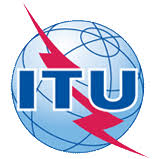IEEE P2846 - Assumptions for Models in Safety-Related Automated Vehicle Behavior








Physical (PHY) and media access control (MAC) layers of the medium frequency band (less than 12 MHz) broadband power line communication technology for smart grid applications (SGPLC) based on orthogonal frequency division multiplexing (OFDM) are specified in this standard. The necessary security requirements that assure communication privacy and allow use for mission critical and security sensitive services and applications are addressed in this standard. The coexistence with other technologies based on IEEE Std 1901(TM)-2010 also are addressed. The approach that is geared towards achieving an extended communication range with medium speeds in comparison with the existing power line communication technologies operating in similar frequency bands is defined in this standard.

Recommendation ITU-T Y.4805 specifies a set of requirements for identifier services in smart city applications with a view to ensure that such systems are interoperable and secure. This set of requirements may additionally serve as guidelines for developing new identifier services for smart cities. The Recommendation includes security features for service integrity and data confidentiality. The Recommendation defines a full list of identifier service requirements, including security requirements, for the identifier service.

The objective of this scope of work is to provide an update of an existing section of ETSI GS OSG 001 (section 7) on security. This GS was originally created under the ISG OSG. This ISG is now closed and no longer active and its scope now falls under the TC PLT. The security in GS OSG 001 has become obsolete and there is an urgent need to update it to ensure continued protection and security of utility and end user customer information within the use of this protocol.

Security issues related to human intrusion upon electric power supply substations are identified and discussed. Various methods and techniques presently being used to mitigate human intrusions are also presented in this guide.

Cybersecurity measures require that a balance be achieved between technical feasibility and economic feasibility and that this balance addresses the risks expected to be present at a substation. Further, cybersecurity measures must be designed and implemented in such a manner that access and operation to legitimate activities is not impeded, particularly during times of emergency or restoration activity. This standard presents a balance of the above factors.
